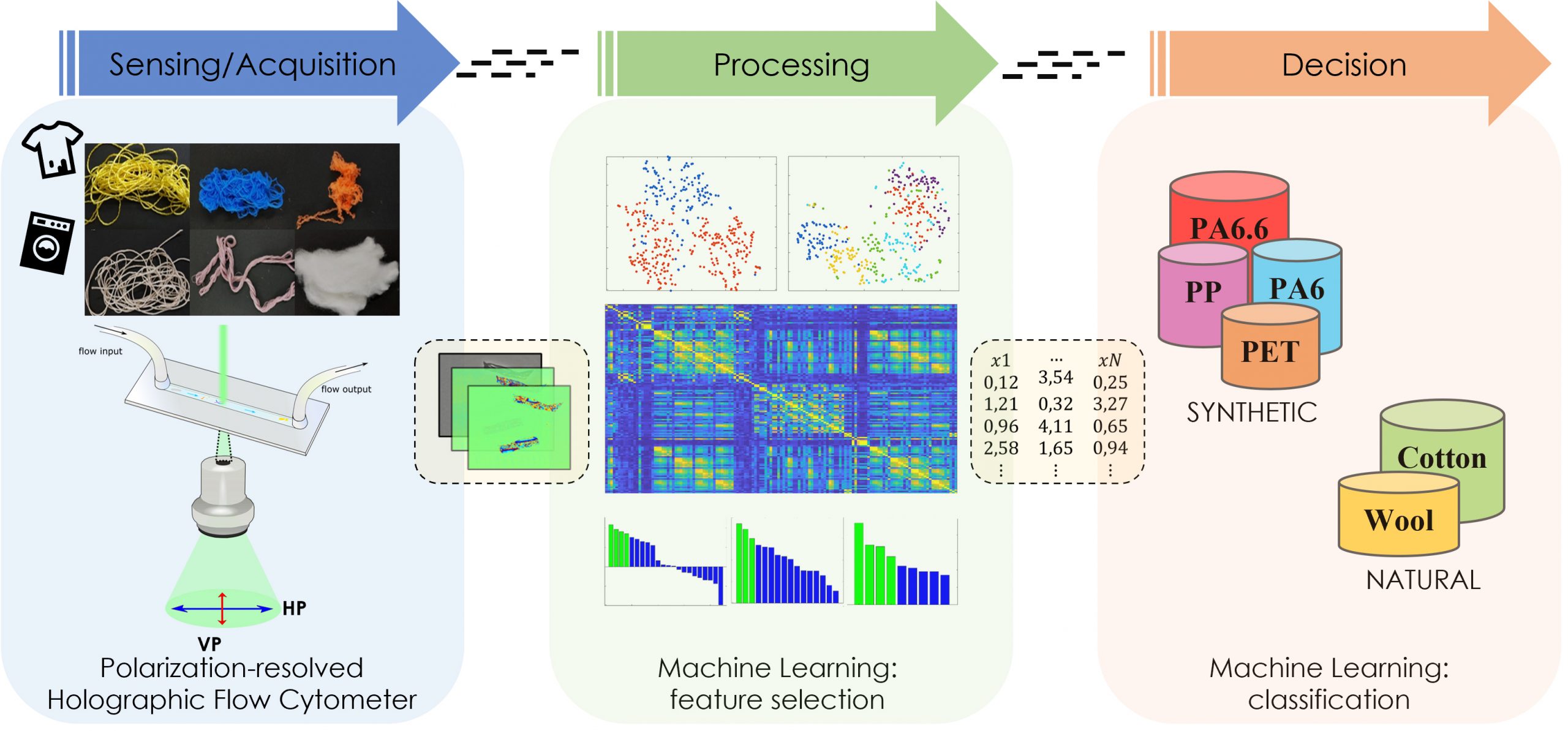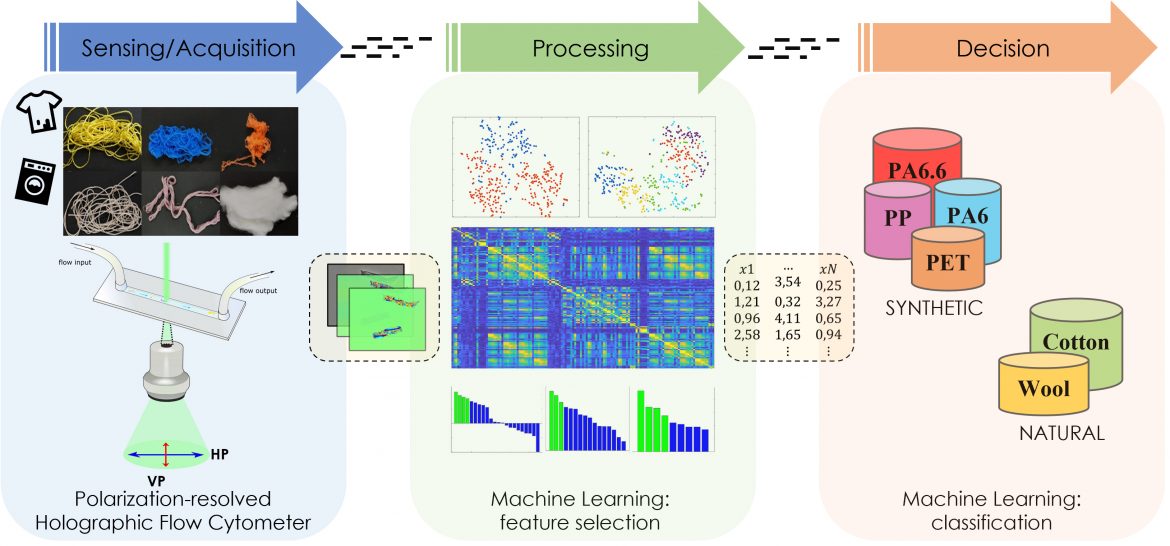Description of the activity
Assessing the pollution state of the environment demands unprecedented efforts in developing new sampling and treatment protocols, high-throughput instruments for microparticles imaging, detection and counting, software architectures for data analysis, and the definition of novel biomarkers. The introduction of new optical imaging methods to serve as sensors for probing the quality of the environment is a rapidly growing field.
Label-free optical microscopy is non-invasive and avoids the use of markers, thus simplifying sample preparation and promoting fast in situ analysis. Digital Holographic (DH) technology is mature enough to move out of the lab in the form of mobile microscopes for screening marine waters and air quality with high-throughput. The research activity is focused on the design and development of optical systems and advanced image processing tools for monitoring the health status of the environment. The latest advances in optics, computational microscopy, optical systems engineering, image analysis, and machine learning are combined in this activity for screening the microparticle content of liquid samples to detect the presence of pollutants. Automatic detection of microplastics, microfibers or heavy metals, microplankton taxonomy, as well as the use of marine algae as natural bioindicators of water quality are among the target applications of this set of activities.

Involved personnel
V. Bianco | P. Memmolo | M. Paturzo| L. Miccio | P. Ferraro
S. Itri | D. Sirico | M. Valentino | T. Cacace
National and International Collaborations
- Stazione Zoologica Anton Dohrn,
- Istituto per i Processi Chimico-Fisici (IPCF-CNR).
Instrumentation/facilities
- Ptychography Labs;
- Digital Holography Labs
Active projects and contracts
- PON Project “SIstemi di Rilevamento dell’Inquinamento Marino da Plastiche e successivo recupero-riciclo” (SIRIMAP), PON ARS01_01183.
- Collaboration with Ettore Stella and Raffaella Mossotti, STIIMA CNR (Bari e Biella)
- Collaboration with Angela Sardo e Elena Cavalletti (SZN A.Dohrn, Napoli)

